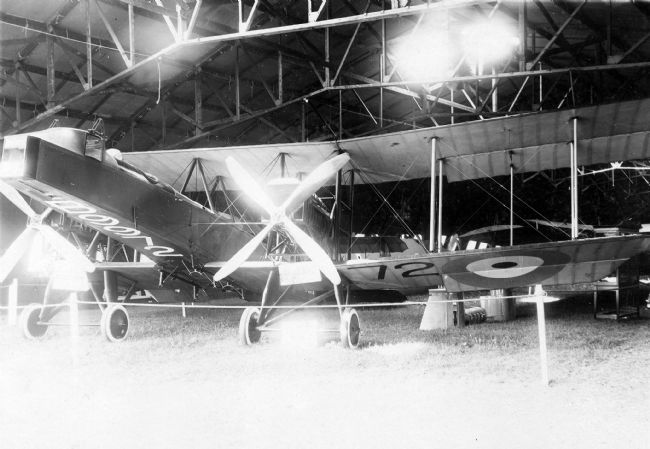Try your hand at designing your own aircraft on our WW1 Aviation interactive (For best results use the latest version of your web browser!)
In the spring of 1919 the Royal Air Force held a special exhibition of aircraft at Roundhay Park in Leeds, showing some of the most common aircraft used during the war. For a fee of sixpence, visitors to the exhibition were allowed to climb into the cockpit of some of the planes to test the controls.
Leeds played a key role in the wartime production of aircraft through the Blackburn Company, a local aircraft factory based in Roundhay. During the war, the company undertook test flights in Soldiers Field at Roundhay Park. (You can find out more about Blackburn Company aircraft in our First World War Aviation Designer interactive.)
Captain A. E. Illingworth, the officer in charge of publicising the exhibition, wrote in the programme:
‘That Aviation has a great future, few will deny. Today it is in its infancy; but it is a healthy infant. The progress which it has made during the last four years justifies the utmost confidence, and the day is not far distant when a great part of the world's produce will be carried by Aerial Merchantmen, when aerial liners will compete with the "floating palaces of the sea" for passenger traffic to all parts of the globe, and when an aerial navy will guarantee the "Freedom of the Skies".’
Before the First World War, some experts had doubted the capabilities of aircraft. French General Ferdinand Foch commented, in 1911, ‘Airplanes are interesting toys but of no military value.’ Yet by 1918, their importance within the conflict had convinced the military that aviation was an essential tool in wartime.
Aircraft on display at Roundhay in 1919 included
- The Avro 504 was an early biplane made out of wood. Although this might sound fragile, the plane was stable and easy to fly. In the early months of the First World War Avro 504 planes were used in reconnaissance missions. When they became too outdated for use on the Front Line, the RAF began to use them in training new pilots and this continued until the 1930s.
- The Sopwith 'Camel', a single-seater, wooden biplane built by the Sopwith Aviation Company from 1917 onwards. The Camel had a powerful engine and could fire from two synchronised machine guns. It was believed to be Britain's best fighter plane and was used by Captain Roy Brown, who is said to have shot down the German ace pilot, Manfred Von Richtofen, known as the 'Red Baron'.
- The Bristol M.1C Monoplane, came into use by the military in late 1916, but was mainly used for training pilots. It was used on the Front Line, but never in France.
- Seaplanes (aircraft capable of taking off and landing on water), which included the Norman Thompson Flying Boat, a hydro-aeroplane.
Glossary
Aerial – something linked to the air or aircraft
Biplane – a type of aircraft with two sets of wings, one above the other
Cockpit - compartment within an aircraft where the pilot and crew members sit
Exhibition - displaying something in public
Infancy – early stages of something or childhood
Manoeuvre – movement or action that requires skill
Reconnaissance – military term for gathering information
Souvenir - something kept as a reminder of a time or place
Seaplane – a plane that is designed to take off from or land on water
Theatres of war – Places in which military operations happen in a war



